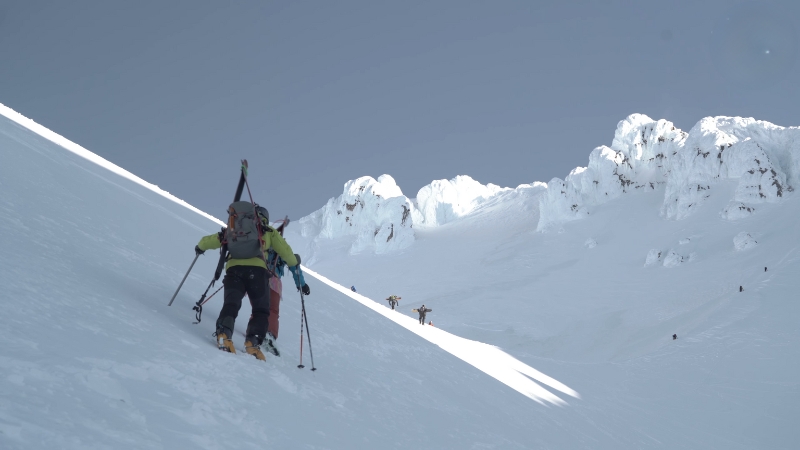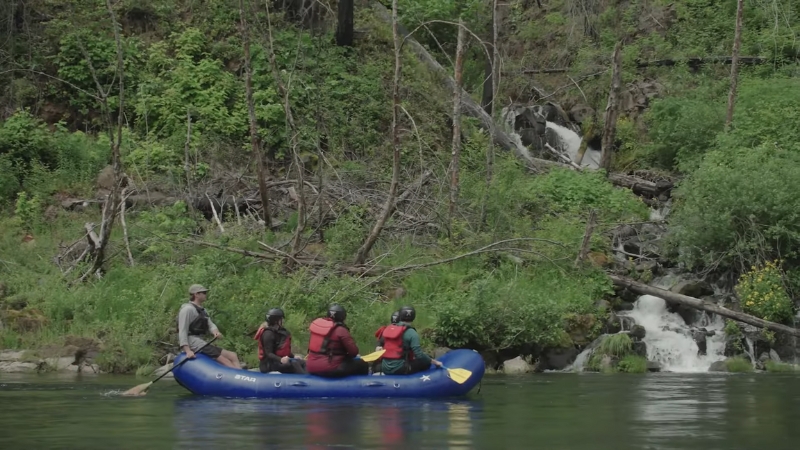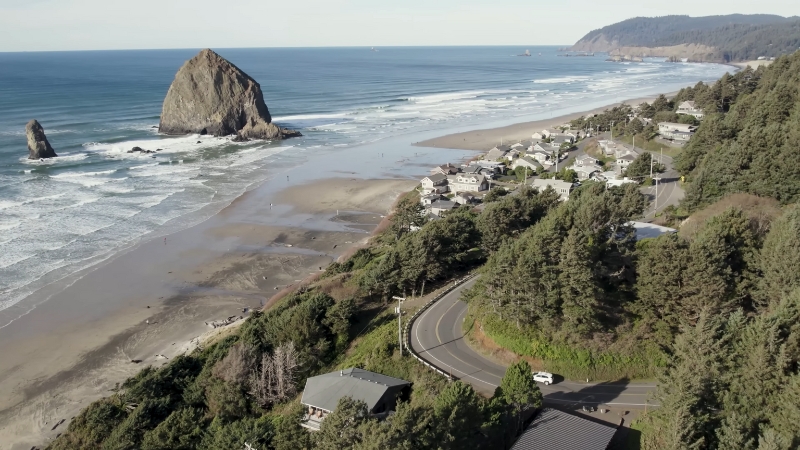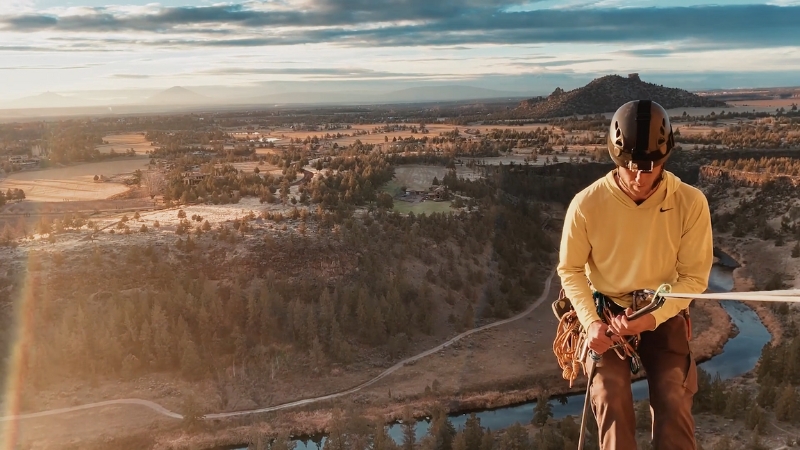When it comes to thrill-seeking, Oregon has something most other states cannot match: a complete mix of landscapes that naturally create adventure.
The state stretches from the high peaks of the Cascades to arid deserts, deep river canyons, and a rugged Pacific coastline. This blend of geography means you do not need to choose between mountains or oceans; you can climb, jump, ride, or raft them all in a single trip.
The concrete truth is this: Oregon is one of America’s most versatile outdoor playgrounds, where adrenaline seekers find both controlled experiences like bungee jumping and raw wilderness challenges like technical mountaineering.
What makes it even more appealing is accessibility. Within just a few hours of Portland or Bend, you can reach cliffs, rivers, dunes, or alpine peaks. Each destination feels unique, yet all share the same appeal: a test of nerve, skill, and endurance set against dramatic natural backdrops.
1. Bungee Jumping at Crooked River Gorge

Few experiences in Oregon capture the sheer fear-versus-thrill equation as cleanly as leaping from the Peter Skene Ogden State Park Bridge over the Crooked River Gorge. The bridge towers 250 feet above the canyon floor, and while the view is beautiful, it also emphasizes the risk.
The moment before the jump, standing on the platform, looking at basalt cliffs and the river below, is as nerve-wracking as the freefall itself. Once you leap, gravity takes over in a matter of seconds, pulling you straight down before the cord stretches and slings you back toward the sky.
The Crooked River jump is one of the highest bungee platforms in North America. It attracts both first-timers who want a single unforgettable memory and repeat jumpers who chase the rush again and again.
Unlike amusement park rides, there is no mechanical track or seat; you are the ride, and that is what makes it such a defining Oregon adventure.
Feature
Detail
Height of Jump
250 feet (76 meters)
Location
Peter Skene Ogden State Park, near Bend
Type of Thrill
Pure freefall over a gorge
Who It’s For
Serious thrill-seekers, first-timers looking for the ultimate test
Extra Notes
Among the tallest commercial bungee jumps in North America
2. Climbing at Smith Rock State Park
Smith Rock is not just a park; it is a climbing icon. Known as the birthplace of American sport climbing, it offers more than 1,800 routes across walls of volcanic tuff and basalt. Climbers from all over the world travel here, and for good reason: the variety ranges from beginner-friendly single-pitch climbs to challenging multi-pitch ascents that test even professionals.
The park’s centerpiece, Monkey Face, is a 350-foot spire that has become one of the most photographed climbing features in the U.S. Standing in the Crooked River Canyon, you will see dozens of climbers scaling walls at any given time, while hikers watch from below. What makes Smith Rock special is that it offers both community and challenge.
Beginners find guided routes and bolted climbs accessible, while advanced climbers push into bold lines that demand technical skill. The dry, high-desert climate also means year-round climbing opportunities.
Feature
Detail
Number of Routes
1,800+ sport and traditional routes
Famous Landmark
Monkey Face spire
Climbing Levels
Beginner to expert multi-pitch
Best Season
Spring & fall (cooler weather)
Extra Notes
International climbing destination with a strong community atmosphere
3. Technical Mountaineering on Mount Hood

At 11,249 feet, Mount Hood is the tallest mountain in Oregon and one of the most climbed glaciated peaks in the U.S. Its proximity to Portland makes it accessible, but that does not mean it is safe. Every year, accidents remind climbers that glaciers, steep snowfields, and sudden storms demand respect.
The South Side route is the most popular, often climbed in spring before snow softens, but even there, hazards like crevasses and falling ice make preparation critical.
For experienced mountaineers, Hood is a technical yet rewarding challenge. Reaching the summit at sunrise is unforgettable.
On clear days, you can see Mount Rainier, Mount Jefferson, and even the Three Sisters. The mountain is both a test and a landmark, representing the raw challenge of alpine climbing without needing to leave Oregon.
Feature
Detail
Elevation
11,249 ft (3,429 m)
Type of Climb
Glaciated, technical routes
Hazards
Crevasses, avalanches, icefall, storms
Best Season
Late spring (May–June)
Who It’s For
Experienced climbers with glacier gear and training
4. Backcountry Cat Skiing at Anthony Lakes
View this post on Instagram
In eastern Oregon, Anthony Lakes Mountain Resort offers a unique experience, backcountry cat skiing. Unlike standard ski lifts, a snowcat transports skiers and snowboarders into remote alpine terrain, giving access to untouched powder far from crowded resorts.
This is not a passive experience; once dropped off, riders face untracked slopes that require confidence and skill.
Anthony Lakes’ location in the Elkhorn Mountains provides consistent snowfall, crisp air, and dramatic alpine scenery.
For thrill-seekers, the reward is solitude paired with adrenaline, skiing terrain that feels wild, with only a handful of people sharing the day. It combines the calm of wilderness with the pulse of carving steep, ungroomed runs.
Feature
Detail
Access Method
Snowcat (guided backcountry)
Terrain Type
Ungroomed powder fields
Season
Winter (Dec–March)
Location
Elkhorn Mountains, Eastern Oregon
Unique Element
Combines isolation with an extreme skiing adventure
5. Whitewater Rafting on Oregon’s Rivers

Oregon’s rivers are some of the most dynamic in the country. The Deschutes River, especially at Dillon Falls near Bend, delivers Class V rapids that demand expert skill.
The falls drop sharply into violent water, creating one of the most dangerous but exhilarating stretches in Oregon.
Farther south, the Rogue River in Grants Pass offers another level of adrenaline. Its rapids thread through Hellgate Canyon, where high rock walls squeeze the river into narrow channels.
This combination of speed, force, and scenery makes it one of the best rafting destinations in the Northwest.
Feature
Detail
Key Rivers
Deschutes River, Rogue River
Rapids Class
Up to Class V
Famous Spot
Dillon Falls (Deschutes)
Scenic Element
Hellgate Canyon (Rogue)
Who It’s For
Experienced rafters and guided adventurers
6. Ziplining in the Tualatin Valley
@akemisadventures Pumpkin Ridge Zipline 💚 Jumping into life and trusting the universe to support me! 🌳 Ziplining with @pumpkinridgezips in the Tualatin Valley, Oregon was so fun! 👉🏼 Have you been ziplining before? Here’s what it’s all about 🪁 There are seven ziplines and two suspension bridges, high above the forest floor, overlooking a gorgeous, tree-filled canyon. 🤸🏻♂️ It’s kind of like hiking, but with adrenaline-filled flying in between standing around waiting for other people to zip, and looking around at the absolutely beautiful green landscape surrounding you. 👯 There are two guides who go with you, and they make sure you are safely strapped in, tell you how to fly backwards or jump off the trees, and help you take selfies! 🎟️ Tickets: $85 for kids 8-15, $95 if you’re over 16. ☀️ It was a great way to spend a morning out in nature. 🙏 Thanks so much to Sylke and Explore Tualatin Valley for getting us out into nature this morning! #hosted #adventuretravel #oregontravel #zipline ♬ original sound – Kopiko_black
Just west of Portland, the Pumpkin Ridge Zip Tour offers thrill-seekers a chance to fly through the forest canopy. The course includes multiple lines stretching across tall Douglas firs, giving riders a sensation of soaring above green valleys.
It is not the most dangerous thrill Oregon offers, but it is one of the most accessible, and that makes it perfect for families or first-time adventurers who want to test their nerves.
The fun of ziplining here comes not just from speed, but from perspective. Few other activities let you see Oregon’s forests from above in such a direct, heart-pounding way.
Feature
Detail
Location
Tualatin Valley, near Portland
Course Length
Multiple forest zip lines
Scenery
Douglas fir canopy, valley views
Thrill Type
Moderate speed, height-based
Who It’s For
Families, first-timers, scenic adventurers
7. Oregon Coast: Dunes, Surf, and Sand

The Oregon Dunes National Recreation Area stretches for 40 miles along the coast, with dunes rising to 500 feet high. These shifting hills create a natural playground for ATVs, dune boarding, and fat-tire biking. The dunes change with the wind, so no two rides feel the same.
Alongside the dunes, the coast offers surfing at Oswald West State Park, where consistent waves challenge both beginners and pros. This combination of sand and sea creates a rare chance to switch between land and water adventures within the same day.
Feature
Detail
Main Location
Oregon Dunes National Recreation Area
Adventure Options
ATVs, dune boarding, fat bikes, surfing
Dune Heights
Up to 500 ft
Extra Element
Mix of desert-like dunes and Pacific surf
Who It’s For
Multi-sport thrill-seekers
8. Wilderness Adventures in Northeast Oregon
View this post on Instagram
For those who want true remoteness, the Wallowa Mountains in northeast Oregon deliver. Sometimes called the “Alps of Oregon,” they provide alpine climbing, backcountry backpacking, and even paragliding.
Unlike managed adventures, these require self-reliance. Trails are long, conditions unpredictable, and encounters with solitude guaranteed.
The thrill here comes from the commitment. Every choice matters when you are days from the nearest town. The payoff, however, is stunning: jagged peaks, alpine lakes, and wide valleys where few people ever venture.
Feature
Detail
Location
Wallowa Mountains, NE Oregon
Nickname
“Alps of Oregon”
Activities
Alpine climbing, backpacking, paragliding
Challenge Level
High, requires preparation and skill
Reward
Remote wilderness, solitude, dramatic views
Conclusion
Oregon offers more than variety; it offers intensity in every landscape. From the raw drop of Crooked River Gorge to the wild rapids of the Rogue, the state is built for those who crave challenge.
Families will also find countless things to do with kids and teens, from safe beginner trails to outdoor adventure parks that showcase Oregon’s wild beauty.
What makes Oregon unique is that every thrill is tied to its natural environment. The mountains, rivers, forests, and dunes themselves are the attractions, not manufactured experiences.
For thrill-seekers, this means that Oregon is not just a place to visit, but a place to test your limits. Each adventure described here is different, but all share the same outcome: a reminder that the natural world can exhilarate, terrify, and inspire, often at the same time.

